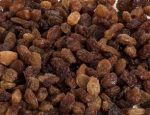 Raison wine dates back to pre-Roman times when grapes were dried to concentrate their juices. Such wines are still being made in northern Italy, Greece and the French Alps with wineries in other areas beginning to take up production too. Raison wines are sweet to very sweet, have a long life, and are expensive because of the labor involved in producing them. My maternal grandmother, Helen S. Wright, included several recipes for raisin wine in her book, Old Time Recipes for Home Made Wine, and presented this one first.
Raison wine dates back to pre-Roman times when grapes were dried to concentrate their juices. Such wines are still being made in northern Italy, Greece and the French Alps with wineries in other areas beginning to take up production too. Raison wines are sweet to very sweet, have a long life, and are expensive because of the labor involved in producing them. My maternal grandmother, Helen S. Wright, included several recipes for raisin wine in her book, Old Time Recipes for Home Made Wine, and presented this one first.
In the words of Grandmother:
For raisin wine without sugar, put to every gallon of soft water eight pounds of fresh Smyrna or Malaga raisins; let them steep one month, stirring every day. Then drain the liquor and put it into the cask, filling it up as it works over; this it will do for two months. When the hissing has in a great measure subsided, add brandy and honey, and paper as in the former articles [?]. This wine should remain three years untouched; it may then be drank from cask, or bottled, and it will be found excellent. Raisin wine is sometimes made in large quantities, by merely putting the raisins in the cask, and filling it up with water, the proportion as above; carefully pick out all stalks. In six months rack the wine into fresh casks, and put to each the proportion of brandy and honey. In cider countries and plentiful apple years, a most excellent raisin wine is made by employing cider instead of water, and steeping in it the raisins.
To buy Old Time Recipes for Home Made Wines by Helen S. Wright Click Here.